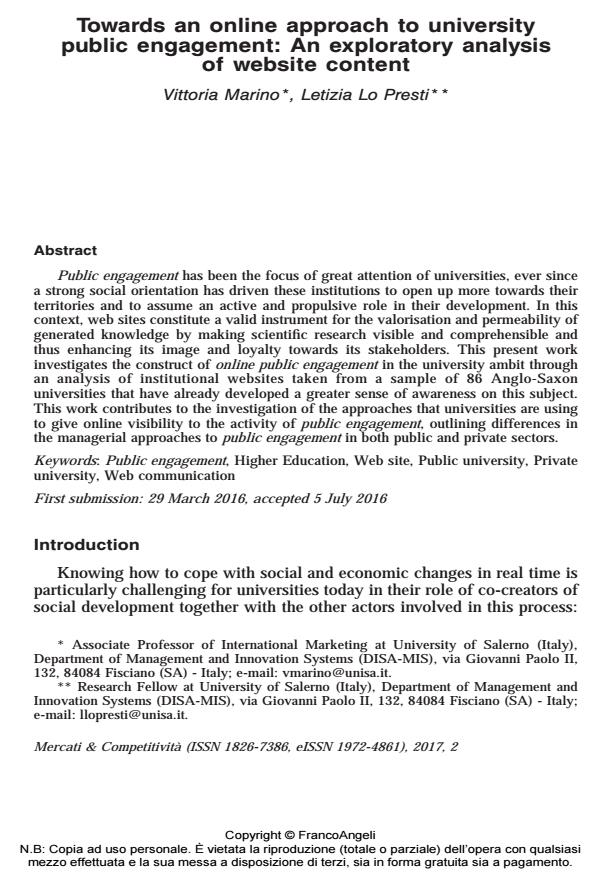Towards an online approach to university public engagement: An exploratory analysis of website content
Titolo Rivista MERCATI & COMPETITIVITÀ
Autori/Curatori Vittoria Marino, Letizia Lo Presti
Anno di pubblicazione 2017 Fascicolo 2017/2
Lingua Inglese Numero pagine 24 P. 75-98 Dimensione file 487 KB
DOI 10.3280/MC2017-002005
Il DOI è il codice a barre della proprietà intellettuale: per saperne di più
clicca qui
Qui sotto puoi vedere in anteprima la prima pagina di questo articolo.
Se questo articolo ti interessa, lo puoi acquistare (e scaricare in formato pdf) seguendo le facili indicazioni per acquistare il download credit. Acquista Download Credits per scaricare questo Articolo in formato PDF

FrancoAngeli è membro della Publishers International Linking Association, Inc (PILA)associazione indipendente e non profit per facilitare (attraverso i servizi tecnologici implementati da CrossRef.org) l’accesso degli studiosi ai contenuti digitali nelle pubblicazioni professionali e scientifiche
Public engagement has been the focus of great attention of universities, ever since a strong social orientation has driven these institutions to open up more towards their territories and to assume an active and propulsive role in their development. In this context, web sites constitute a valid instrument for the valorisation and permeability of generated knowledge by making scientific research visible and comprehensible and thus enhancing its image and loyalty towards its stakeholders. This present work investigates the construct of online public engagement in the university ambit through an analysis of institutional websites taken from a sample of 86 Anglo-Saxon universities that have already developed a greater sense of awareness on this subject. This work contributes to the investigation of the approaches that universities are using to give online visibility to the activity of public engagement, outlining differences in the managerial approaches to public engagement in both public and private sectors.
Parole chiave:Public engagement, Higher Education, Web site, Public university, Private university, Web communication
Vittoria Marino, Letizia Lo Presti, Towards an online approach to university public engagement: An exploratory analysis of website content in "MERCATI & COMPETITIVITÀ" 2/2017, pp 75-98, DOI: 10.3280/MC2017-002005